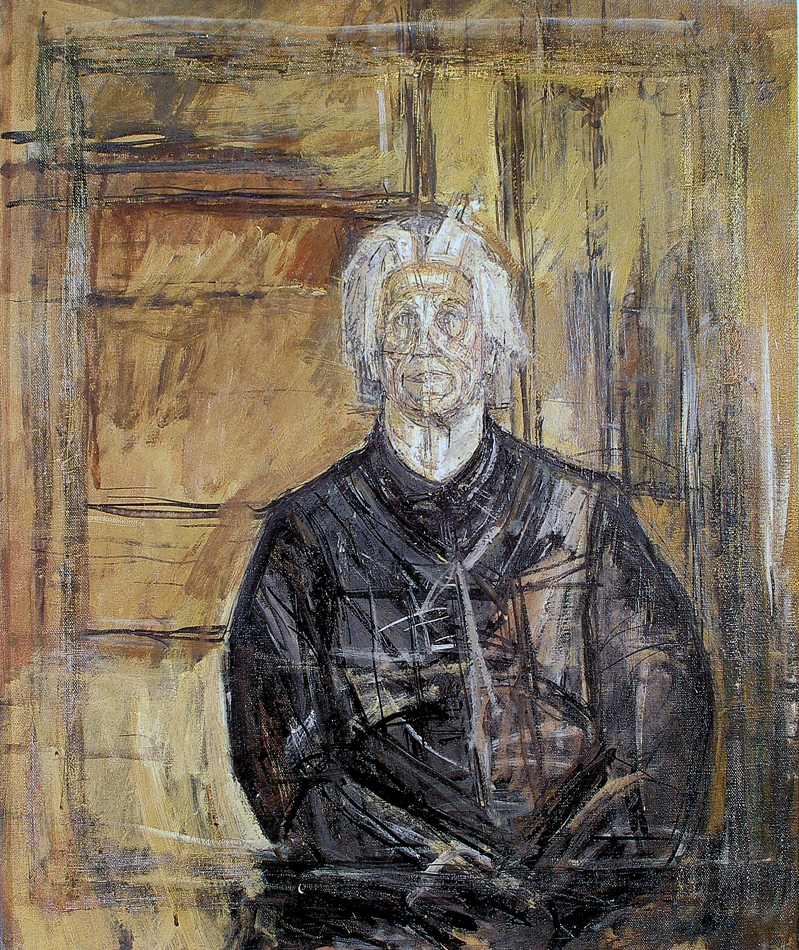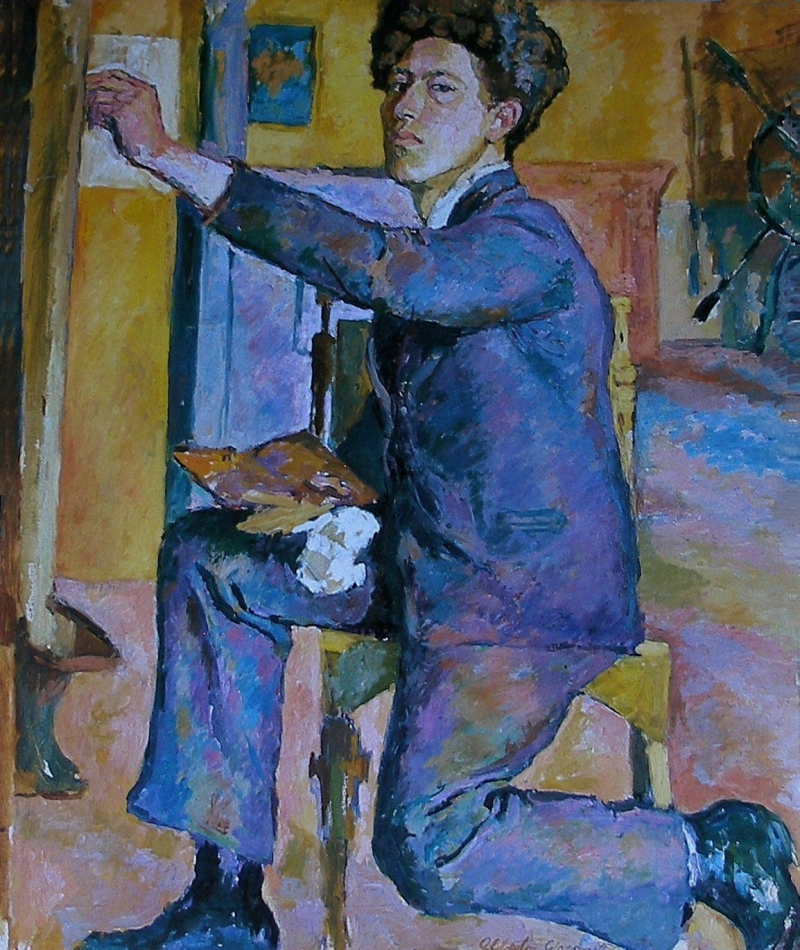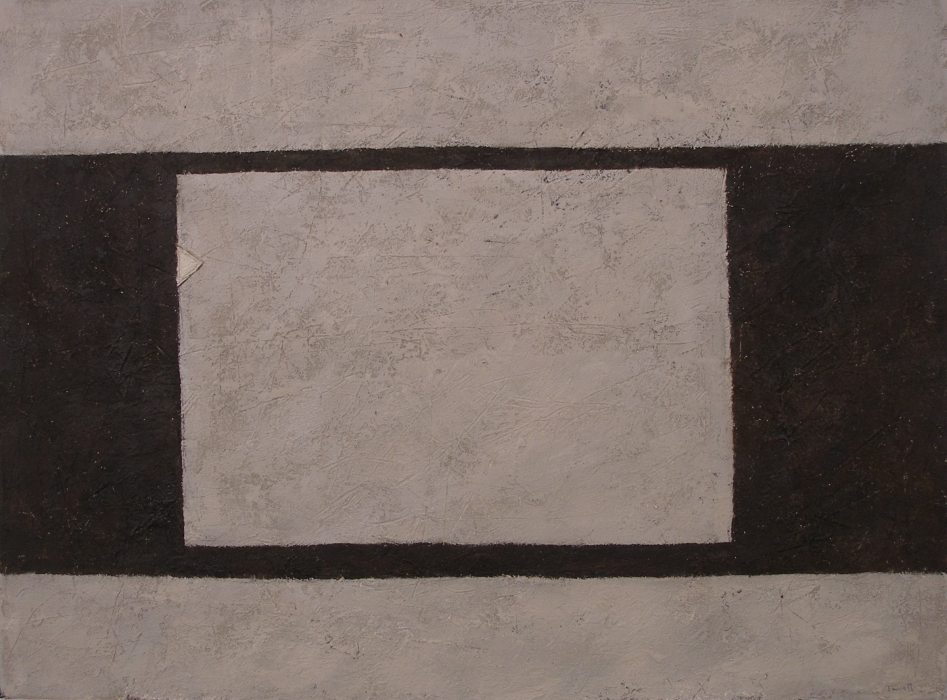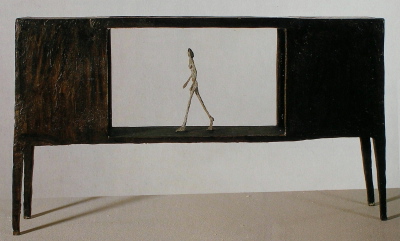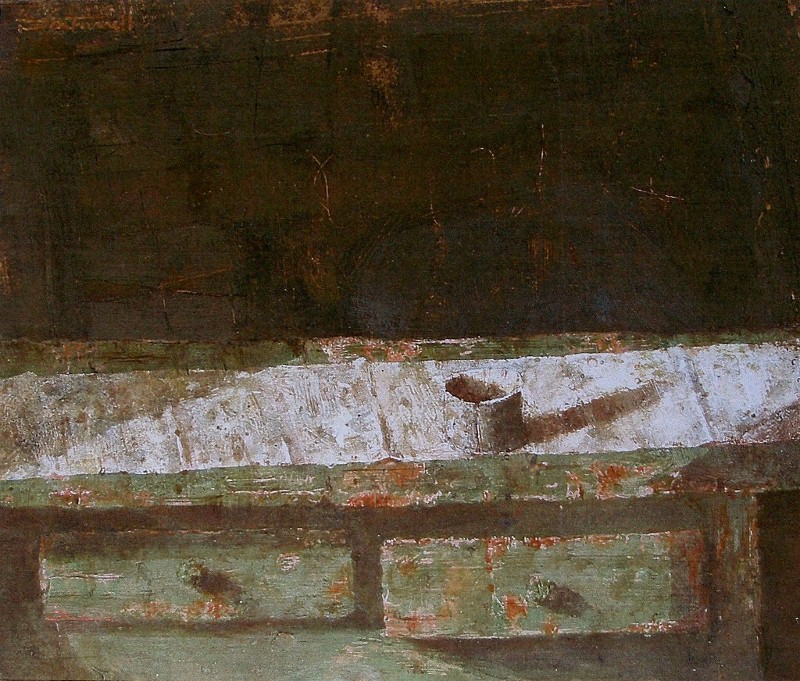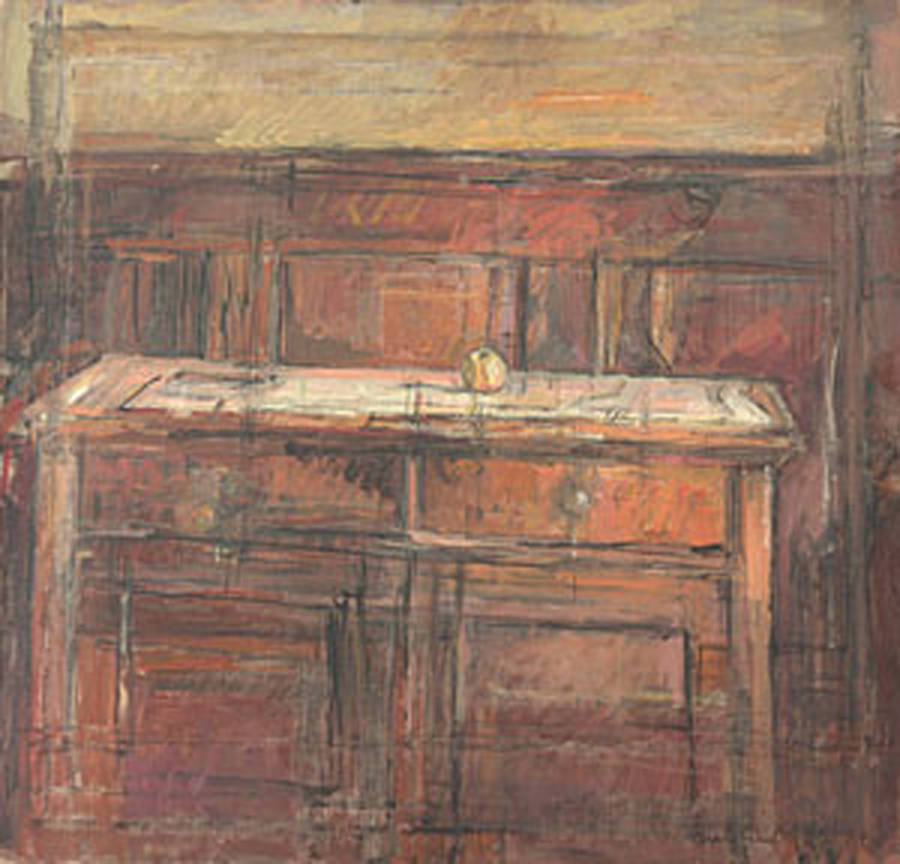Giacometti was a master of composition. In this painting he demonstrates this with how he merged his mother with her surroundings. I will do my best to explain some of his superb considerations.
One of the best ways to convey a sense of space is to frame the subject, which Giacometti does beautifully. We are looking through a large rectangle which seems to be suspended in front of the figure. Can you feel the space? We then engage with the arrangement of rectangles which make up the structural elements of the wall behind.
A good entry point to how Giacometti uses these supporting rectangles is with the horizontal black line running across her chest forming the tops of a series of vertical rectangles. These rectangles relate to another series of verticals on the wall behind. If you look closely you will also see how they connect or integrate with the figure, especially with the vertical rectangle integrating with the light ones on her shoulder and below. If you blur your eyes the integration is very strong.
Note how the lines of the wall support the figure, especially at the shoulders and that wonderful angle at the top of her head. The lines extending from her shoulders, stabilizing her, is magnificent integration.
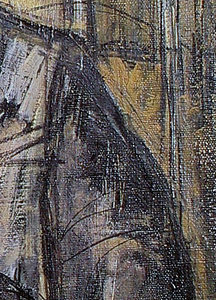 There are some wonderfully subtle rectangles which are actually spatial planes. We have the feel of one in front her upper left arm with its top being the line extending from her shoulder (see detail) It is not initially apparent, but becomes strong when you become aware of it. There is another just below. I should also point out the dark vertical rectangle just above and how it provides a very sensitive support for the figure. Remember the intention is they are meant to be felt more than seen.
There are some wonderfully subtle rectangles which are actually spatial planes. We have the feel of one in front her upper left arm with its top being the line extending from her shoulder (see detail) It is not initially apparent, but becomes strong when you become aware of it. There is another just below. I should also point out the dark vertical rectangle just above and how it provides a very sensitive support for the figure. Remember the intention is they are meant to be felt more than seen.
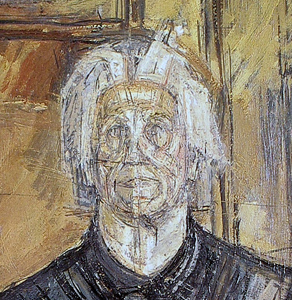 Her face is very complex with some wonderful cubist planes. (see detail) The most noticeable are the white shapes in her hair above her forehead with the sensitive lines connecting and extending the planes onto her forehead. I love the vertical one in front of her neck and mouth leading up to her nostrils, connecting to a thin line leading to the left forming the top of another plane. The vertical also continues upward connecting to the vertical above, solidifying the figure with the background. At the risk of over explaining this wonderful integration, reverse the direction from the top. Your eye will connect to the light vertical leading down to her hands.
Her face is very complex with some wonderful cubist planes. (see detail) The most noticeable are the white shapes in her hair above her forehead with the sensitive lines connecting and extending the planes onto her forehead. I love the vertical one in front of her neck and mouth leading up to her nostrils, connecting to a thin line leading to the left forming the top of another plane. The vertical also continues upward connecting to the vertical above, solidifying the figure with the background. At the risk of over explaining this wonderful integration, reverse the direction from the top. Your eye will connect to the light vertical leading down to her hands.
I marvel at the quality of the horizontal forming the bottom of her hair behind, then, at the right connecting to vertical shapes which create the feel of planes in front.
I mustn’t neglect how he relieved the strong vertical and horizontal structure with a very sensitive oblique rhythm of parallels. Let’s return to the white plane in her hair pointing up towards the right. Just below to the right is another small plane paralleling the direction. When you go to the left of her head you will find other markings echoing the movement. And a most important light one below her collar. We may not notice the oblique movement but we will certainly feel it.
Once you train your eye to notice the complexity you come to appreciate the sophistication of his considerations.

